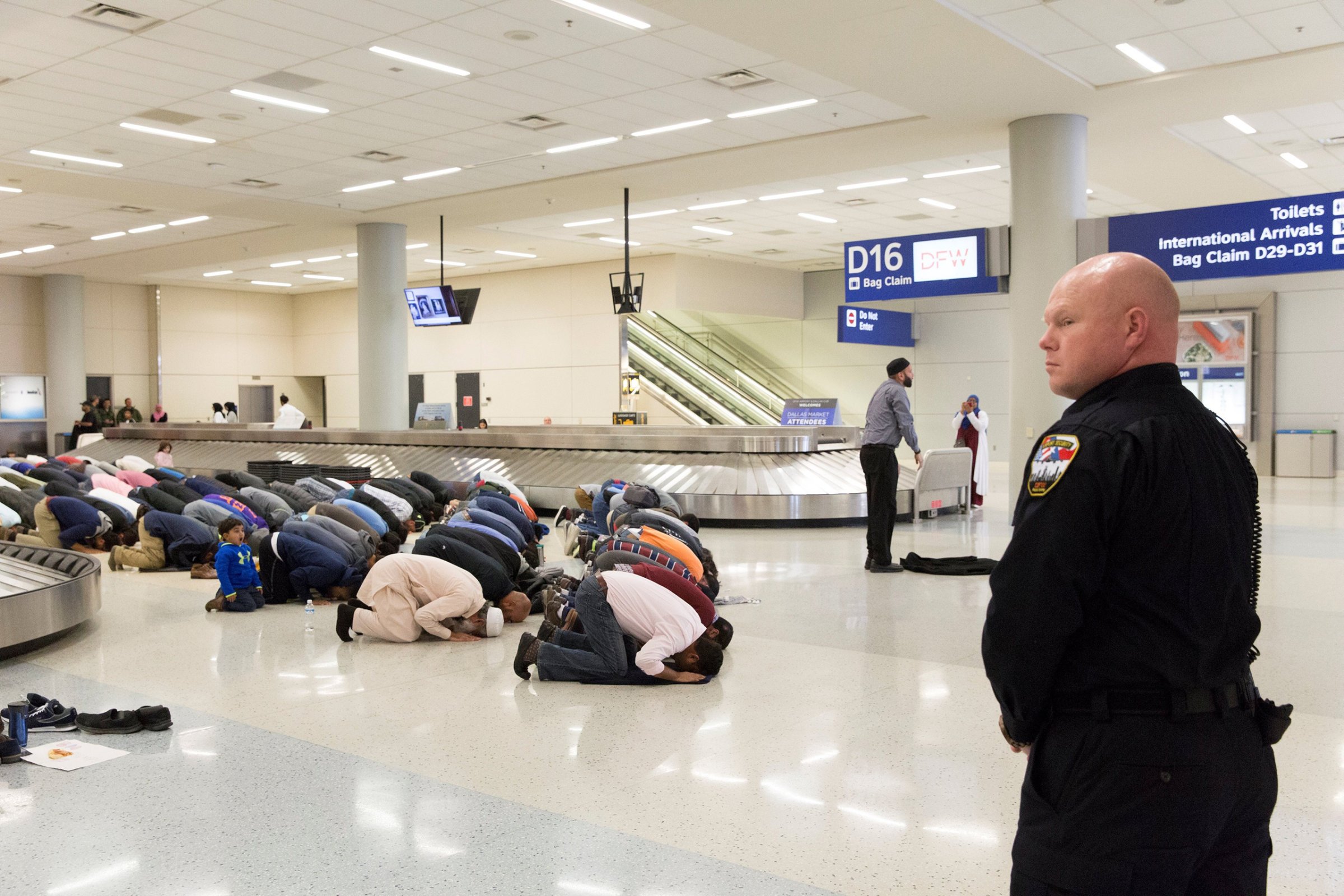
The U.S. has given sanctuary to more than 3 million people fleeing religious, political or racial persecution since instituting rigorous refugee screening in 1980. Not one has killed anyone in a terrorist attack. Even if you include the three Cuban refugees who murdered three people in the 1970s, before those standards were in place, the odds of a U.S. citizen dying from a terrorist attack by a refugee on American soil are infinitesimal–roughly 1 in 3.6 billion, according to the Cato Institute, or 48 times less than the chance of being killed by an asteroid.
But that didn’t stop President Trump from raising the possibility on Jan. 27, when he signed an Executive Order suspending refugee resettlement for 120 days and barring it indefinitely from Syria. The order also temporarily barred other immigrants, including professionals and green-card holders, from seven majority-Muslim countries. The goal, Trump said, was to keep out “radical Islamic terrorists” and give authorities more time to increase vetting standards. “We want to ensure that we are not admitting into our country the very threats our soldiers are fighting overseas,” he explained.
The backlash was swift. On Jan. 28, amid massive protests at airports nationwide, the ACLU and other rights groups successfully filed suits preventing deportations under the order. At least four state attorneys general took legal action to overturn it. On Jan. 30, Trump’s acting Attorney General, Sally Yates, who had been appointed by President Obama, told federal prosecutors not to defend the order; she wasn’t sure, she wrote, that Trump’s order was “consistent with [the Justice Department’s] solemn obligation to always seek justice and stand for what is right.” Trump promptly fired her, saying that increased vetting of immigrants and refugees was needed and had been undertaken by Democrats under Obama.
There is precedent for some of this. In 2011, Obama did pause the processing of refugee-resettlement requests from Iraq for six months in response to a suspected terrorist plot. And legally, it does fall to the President, in consultation with Congress, to oversee immigration and set the levels of refugee admission. Under a 1993 Supreme Court ruling, refugees and immigrants get legal protections when they arrive in the U.S., including under the Geneva Conventions, but have few rights before they come to the country. The Office of Legal Counsel at the Justice Department, which gives definitive legal advice to the President, looked at the order and declared it legally sound.
There were criticisms on nonlegal grounds. For one, the order wasn’t drafted and circulated among agencies using the normal checks and safeguards. The staffs of the Senate and House Judiciary Committees, which are supposed to oversee the White House on immigration matters, helped write the order after reportedly signing nondisclosure agreements. The secretive process led to widespread confusion when the order took effect. Many customs and border agents were unclear how to enforce it, sending some refugees back to their countries of origin–possibly violating the rights they were entitled to once on U.S. soil–and leaving other travelers stranded and in custody at airports.
The more pointed criticism is that the order discriminates on the basis of religion. Trump denies this charge, despite calling for “a total and complete shutdown of Muslims entering the United States” during his campaign. But even his allies have suggested it may be true: “When [Trump] first announced [the vetting plan], he said, ‘Muslim ban,'” Rudy Giuliani told a Fox News host on Jan. 28. “He called me up. He said, ‘Put a commission together. Show me the right way to do it legally.'” On security grounds alone, experts worry, the veneer of discrimination could alienate Muslim-American allies who are crucial to thwarting homegrown terrorist attacks, and could help terrorists persuade recruits that America is at war with Islam.
The Constitution bars religious discrimination, but lawyers will have a hard time proving that Trump’s order targets Muslims, says Alex Aleinikoff, a professor at the New School. The order’s immigration measures target only seven of many Muslim-majority countries in the world, and the refugee constraints apply globally. Then again, courts haven’t been asked to weigh in on a religious test for refugees before.
The outrage continues. Iraq voted to bar Americans’ entry, Britain’s House of Commons unanimously condemned the order, and protests continue in the U.S. But for Trump, outrage may have been the point. Senior White House officials are reportedly planning more immigration Executive Orders in the coming days to deliver on Trump’s campaign pledges targeting immigrants. It remains to be seen which threats–real or exaggerated–he will use to justify them.
More Must-Reads from TIME
- Why Trump’s Message Worked on Latino Men
- What Trump’s Win Could Mean for Housing
- The 100 Must-Read Books of 2024
- Sleep Doctors Share the 1 Tip That’s Changed Their Lives
- Column: Let’s Bring Back Romance
- What It’s Like to Have Long COVID As a Kid
- FX’s Say Nothing Is the Must-Watch Political Thriller of 2024
- Merle Bombardieri Is Helping People Make the Baby Decision
Contact us at letters@time.com